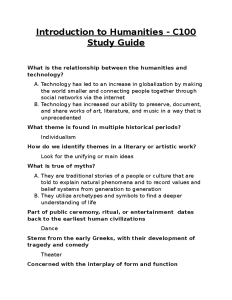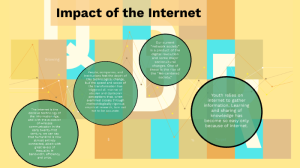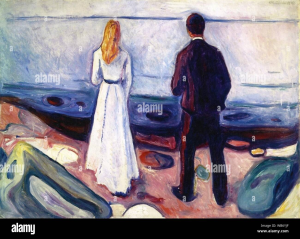South Asian art pigments hold a vibrant significance in the world of historical art, as revealed by the ongoing “Mapping Color in History Project.” This innovative initiative, spearheaded by Jinah Kim, seeks to bridge the gap in understanding the complex palette utilized by artists across centuries in the region. Through meticulous pigment analysis in South Asia, researchers are uncovering unique colorants that have shaped Indian manuscripts and other artworks, challenging long-held assumptions about their origins. By mapping these pigments, the project not only highlights the contributions of traditional colorants but also invites a reevaluation of the historical art pigments that have often been attributed solely to European imports. With the fusion of art history and scientific investigation, the database serves as a vital resource for anyone interested in the colorful narratives embedded in South Asian art.
Exploring the intricate world of colorants utilized in South Asian artistic traditions unveils a rich tapestry of creativity and technical prowess. These historical colorings, deeply embedded in the cultural fabric of the region, reflect indigenous knowledge that has evolved over centuries. Jinah Kim’s initiative to analyze the vibrant pigments found in Indian manuscripts enriches our understanding of the diverse hues that characterized this artwork. By delving into the evolution of these materials and their historical context, we can appreciate the artistry of South Asian heritage in a new light. From the ancient techniques to modern applications, the journey of these pigments encapsulates a unique narrative in the annals of art history.
Exploring Historical Art Pigments in South Asia
The study of historical art pigments in South Asia opens a fascinating avenue into the region’s artistic past. Jinah Kim’s project, “Mapping Color in History,” serves as a pivotal resource, revealing uncharted territories of pigment use that may have predated European imports. Traditional Indian manuscripts, dating back several centuries, are now being examined under advanced scientific methods to provide insights into indigenous practices of colorants, showcasing a vibrant palette that defines South Asian art. As researchers delve into pigment analysis, they are uncovering a rich array of hues that are integral to understanding cultural and historical contexts.
Further research into colorants in Indian manuscripts highlights the unique compositions of these pigments, often derived from local minerals and organic materials. For example, the discovery of smalt with a different formulation than European counterparts suggests that indigenous artisans had their own methods of pigment creation long before the influx of foreign colors. This newfound knowledge challenges existing paradigms and encourages a deeper appreciation for the innovative approaches employed by South Asian artists, contributing to the ongoing narrative in art history.
The Role of South Asian Art Pigments in Cultural Heritage
South Asian art pigments hold not only aesthetic value but also a significant cultural heritage. By examining the materials and methods used by artists, researchers can gain insight into cultural practices and historical developments across time periods. The Mapping Color in History Project emphasizes the importance of this exploration, allowing curators and art historians to connect the dots between historical artworks and contemporary trends. Understanding pigments used in various artworks from the region provides a soundtrack to the narratives conveyed through these vibrant pieces of art.
The endeavor also invites collaboration between conservators, scientists, and historians, as demonstrated by the project’s focus on mapping origins and compositions for various artworks. This cross-disciplinary approach fosters appreciation and awareness of cultural heritage in South Asia, enabling a broader audience to understand the complexities of traditional colorants used in art. With the evolution of modern technology, researchers can now analyze historical pigments non-destructively, preserving the integrity of these treasured artifacts while providing critical insights into their personal and cultural significance.
Mapping Color in History Project: A Collaborative Initiative
The Mapping Color in History Project epitomizes the value of interdisciplinary collaboration in contemporary art conservation efforts. By integrating the expertise of digital humanities, material scientists, and art historians, this initiative underscores the complexity of analyzing historical pigments. The project’s founders, steering it since 2018, have opened new pathways for understanding South Asian art by mapping pigments used throughout history. This collaborative framework not only promotes research but also enhances cross-cultural dialogues regarding the importance of preserving and understanding artistic traditions.
The involvement of experts from various fields has allowed for the creation of a comprehensive, open-access pigment database. This encourages global participation from curators, educators, and art enthusiasts, extending knowledge about historical art pigments beyond traditional academic boundaries. By providing tools for users to filter data based on key attributes, the project contributes to the democratization of knowledge, creating opportunities for further research and appreciation of the rich tapestry of colors that define South Asian art.
Innovative Technologies in Analyzing Historical Pigments
The use of advanced technologies in analyzing historical pigments has revolutionized the field of art conservation and research in South Asia. Techniques such as x-ray fluorescence and Raman spectroscopy allow scientists to identify pigments without damaging the artworks, preserving their integrity while unraveling their secrets. These innovations enable a new level of precision in pigment analysis, illuminating the intricate methods artists employed centuries ago. For instance, Raman spectroscopy provides critical molecular-level insights, allowing researchers to distinguish between closely related pigment types, which can revise our understanding of artistic choices and practices.
Through the application of these non-invasive methods, the Mapping Color project has made remarkable discoveries about traditional materials and their uses in historical artifacts. By emphasizing the need for meticulous analysis and care, the project not only protects invaluable cultural assets but also lays the groundwork for future explorative studies into historical art pigments. As technology continues to advance, the field can expect further enlightenment on the use of indigenous colorants, revealing the innovative spirit that underpinned South Asian artistry.
The Impact of Indigenous Colorants on Artistic Expression
The exploration of indigenous colorants in South Asian art reveals a profound layer of historical and cultural significance. Artists in the region have historically utilized local materials to create pigments that reflect their environment, culture, and identity. By examining the specific pigments employed in artworks, such as those studied in the Mapping Color in History Project, scholars can gain insights into artistic choices, cultural connections, and even societal influences at the time of creation. This deep understanding of materials enhances the appreciation of traditional art forms that continue to flourish today.
Furthermore, recognizing the role of indigenous colorants urges a reevaluation of historical narratives surrounding South Asian art. As more evidence surfaces about the local origins of these pigments, it challenges the perception of dependence on European imports and highlights the brilliance of indigenous artistry. Reestablishing the narrative in this way not only honors the creativity and resourcefulness of past artists but also fosters a renewed interest in the practices that shape contemporary South Asian art.
Understanding Color in Historical Context
Understanding the historical context of color in South Asian art involves exploring how pigments were sourced, their symbolic meanings, and their application in various forms of artistic expression. The Mapping Color in History Project delves into the significance of colors in different cultures, revealing that the use of pigments often transcends mere aesthetics. Colors convey emotions, status, and spiritual beliefs, indicating that artists selected pigments with intention and specific meanings behind them.
Dissecting the historical palette allows for deeper engagement with South Asian art, fostering a connection between viewers and artworks. It highlights how artists used local resources to create compelling stories through color, further enriching the narrative of cultural heritage. This nuanced perspective enables a broader appreciation for the complexities of historical art, encouraging ongoing discourse about its relevance in contemporary society.
Challenges in Documenting Historical Pigment Origins
Documenting the origins of historical pigments poses a significant challenge in South Asian art studies. Many artworks, particularly those from earlier centuries, lack precise records regarding their creation, including the specific locations and techniques employed. As an integral part of the Mapping Color in History Project, researchers strive to address these gaps by conducting comparative studies and consolidating information across various historic collections. This comprehensive approach is essential to create a reliable reference framework that can inform viewers about the historical significance of highlighted artworks.
Moreover, the ambiguity surrounding many pieces leads to a tendency to oversimplify attributions in existing databases. Jinah Kim emphasizes the need for more thorough research to provide accurate contextual references for historical paintings. As art historians and scientists work together to clarify these nuances, it will contribute to a clearer understanding of South Asian art history and its vibrant tradition of color, ensuring that future generations appreciate the depth behind the artistry.
The Legacy of Traditional Indian Art Practices Today
The legacy of traditional Indian art practices has persisted, not only in artwork but also in the materials utilized by contemporary artists today. By studying how current artisans, like Babulal Marotia in Jaipur, source and apply pigments in their work, projects like Mapping Color in History bridge the gap between past and present. These artisans carry forward techniques and knowledge that have been passed down through generations, embodying the spirit of South Asian art and retaining vital connections to cultural heritage.
Furthermore, supporting and documenting these practices aids the preservation of traditional art forms against the backdrop of globalization and modern influences. As contemporary artists explore indigenous colorants, they contribute to the conversation about sustainability and cultural preservation. This dynamic interplay invites a renewed appreciation for traditional methods while inspiring new creative expressions that honor the rich history of South Asian artistry.
Future Directions in Pigment Research and Art Conservation
Looking ahead, future directions in pigment research and art conservation will involve the continuous evolution of methodologies and tools utilized in the analysis of historical artworks. As technology advances, researchers can expect to reveal more complex interactions between colorants and materials used in South Asia. This allows for a greater understanding of how these elements are interwoven into the historical narrative of art, potentially leading to unprecedented discoveries about South Asian artistic traditions.
Moreover, the ongoing collaboration between interdisciplinary teams will inspire innovative approaches to art conservation, redefining protocols for working with historical artifacts. By prioritizing non-invasive techniques and engaging culturally sensitive practices, researchers will be better equipped to respect and preserve the integrity of South Asian art. The Mapping Color in History Project stands at the forefront of these initiatives, paving the way for a more inclusive and comprehensive understanding of the colorful narratives that have shaped the visual culture of South Asia.
Frequently Asked Questions
What are the historical art pigments used in South Asian art?
Historical art pigments in South Asian art include a variety of indigenous colorants as well as imported pigments. Researchers like Jinah Kim are working on the Mapping Color in History Project to identify and map these pigments, revealing that some pigments believed to have been imported from Europe were actually used in South Asia much earlier than previously thought. This includes natural pigments like Indian yellow and orpiment, which were crucial for creating vibrant colors in manuscripts.
How does pigment analysis in South Asia contribute to our understanding of colorants in Indian manuscripts?
Pigment analysis in South Asia, as highlighted in the Mapping Color in History Project, provides insight into the history and availability of colorants in Indian manuscripts. By examining the composition of pigments, researchers can determine whether certain colorants were imported or had indigenous origins, shedding light on the artistic practices of the time and revealing nuances in color usage that were previously obscured.
What role does the Mapping Color in History Project play in studying pigments in South Asian art?
The Mapping Color in History Project is a pivotal initiative led by Jinah Kim that aims to create a comprehensive database of pigments used in South Asian art. This project enables researchers, conservators, and historians to access critical information about historical art pigments, including their origins and usage in various artworks. It leverages modern scientific techniques to analyze colors in historical manuscripts, thereby enhancing our understanding of the art and culture of the region.
How do modern techniques enhance pigment analysis in historical South Asian art?
Modern techniques like infrared imaging, x-ray fluorescence, and Raman spectroscopy significantly enhance pigment analysis in historical South Asian art. These non-invasive methods allow scientists to identify and analyze pigments without damaging the artworks, providing valuable insights into the materials artists used, such as Indian yellow or orpiment, and illuminating the complex color palettes of South Asian manuscripts.
What are the challenges in mapping the origins of pigments in South Asian manuscripts?
Mapping the origins of pigments in South Asian manuscripts is challenging due to the lack of precise information regarding dates, locations, and artists for many historical works. Often, artwork descriptions are vague, leading to difficulties in attributing specific pigments to certain periods or regions. Ongoing research and comparative studies are essential to improve the accuracy of these mappings, as emphasized by Jinah Kim in her efforts with the Mapping Color in History Project.
Why are traditional painting materials from contemporary South Asian artists important for pigment research?
Studying traditional painting materials from contemporary South Asian artists, like those analyzed by Jinah Kim’s team in Jaipur, is important for pigment research because it provides direct insight into ongoing artistic practices and materials that have historical significance. These studies help bridge the gap between historical pigments and modern techniques, allowing researchers to access knowledge that informs the use of native colorants that have persisted through generations.
| Key Aspects | Details |
|---|---|
| Project Origin | Mapping Color in History Project, initiated in 2018. |
| Key Discoveries | Indigenous knowledge of pigments was previously overlooked; certain pigments used earlier than historically documented. |
| Scientific Analysis Methods | Utilizes non-invasive imaging, x-ray fluorescence, and Raman spectroscopy for pigment identification. |
| Collaboration | Involves experts from digital humanities, conservation science, and art history. |
| Open-Access Database | Allows search by artwork title, pigment, color, and region to enhance accessibility of data. |
| Educational Value | Intended for use by art historians, conservators, and anyone interested in color. |
| Future Aspirations | Plans to enhance the database with more artworks and visualization tools. |
Summary
South Asian art pigments have a rich history that reflects the vibrant culture and artistic traditions of the region. The Mapping Color in History Project has unveiled critical insights into the use of pigments in South Asian art, revealing that many pigments thought to be European imports may have indigenous origins. Through cutting-edge scientific methods, this project not only documents the historical usage of colors but also serves as a collaborative platform for research across disciplines. Ultimately, the ongoing work aims to improve our understanding of South Asian art pigments, offering valuable resources for art historians and enthusiasts alike.









